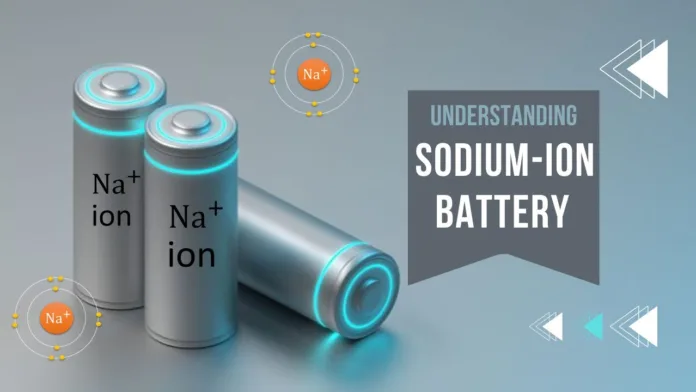
In a significant scientific breakthrough, researchers from the Jawaharlal Nehru Centre for Advanced Scientific Research (JNCASR) have developed a fast-charging sodium-ion battery that can charge up to 80% in just six minutes. This cutting-edge battery technology not only addresses the increasing global demand for rapid charging but also represents a major step forward in the realm of sustainable energy storage, especially for electric vehicles (EVs) and renewable energy systems.
This advancement brings India to the forefront of energy innovation, showcasing indigenous capabilities in battery science. As the world shifts towards electrification and carbon neutrality, the role of efficient, affordable, and scalable battery technology becomes crucial—and this sodium-ion battery innovation in India could be a game-changer.
🔋 What Makes This Battery So Special?
The research team, working at JNCASR, focused on creating a battery with rapid charging capabilities while maintaining longevity and stability. The newly developed battery is based on NASICON-type cathode and anode materials. NASICON stands for Sodium Super Ionic Conductor, a structure known for its excellent ionic conductivity and structural stability, which are key characteristics for developing reliable batteries.
The battery can achieve 80% charge in six minutes, a remarkable feat compared to conventional lithium-ion batteries, which generally require 30 minutes to an hour for similar performance, even with fast charging technologies.
Moreover, this fast-charging sodium-ion battery can sustain over 3,000 charge cycles, making it durable and long-lasting. This durability is especially beneficial for electric vehicles, drones, solar grids, and even rural home applications.
🚘 Applications: Revolutionising Electric Mobility and Energy Access
One of the most exciting implications of this development lies in its application across sectors such as:
Electric Vehicles (EVs): A major limitation of EV adoption has been the charging time. This battery could significantly reduce EV charging duration, addressing one of the key pain points for consumers and manufacturers alike.
Solar and Renewable Grids: With renewable energy sources becoming more prevalent, there is a growing need for energy storage systems that can quickly store and release energy. Sodium-ion batteries provide an efficient solution here.
Drones and Robotics: Lightweight and quick-charging batteries are critical for drones, which need to be operational for longer periods with minimal downtime.
Rural Electrification: In regions with limited power infrastructure, having a rapidly chargeable and stable battery system can greatly enhance access to electricity for lighting, irrigation, and communication.
These use cases highlight the scalability and versatility of sodium-ion batteries, especially in developing nations like India where affordability and efficiency are key factors in mass adoption.
🔬 How Sodium-Ion Differs from Lithium-Ion
While lithium-ion batteries dominate the global energy storage market, sodium-ion technology offers several distinct advantages:
Abundant Raw Material: Sodium is far more abundant and accessible than lithium. It can be sourced from common materials like salt, making it more sustainable and cost-effective.
Thermal Stability: Sodium-ion batteries generally exhibit better safety and thermal tolerance, making them less prone to overheating or catching fire—a risk associated with lithium-based systems.
Lower Cost: Due to the abundance of sodium and the relatively simpler manufacturing process, sodium-ion batteries can be produced at a lower cost compared to their lithium counterparts.
However, until now, sodium-ion batteries were considered less efficient in terms of energy density and charge time. This innovation by Indian researchers successfully addresses the major hurdle of rapid charging, making sodium-ion a viable competitor.
🔧 Behind the Breakthrough: The Role of NASICON-Type Materials
The breakthrough hinges on the use of NASICON-type materials for both cathode and anode. NASICON’s unique crystal structure provides pathways for rapid ion transport, which is essential for fast charging. These materials also demonstrate structural integrity over numerous charging cycles, ensuring longevity.
By engineering the NASICON materials to work efficiently with sodium ions, the researchers have achieved a high-performance battery that retains capacity and speed even under rigorous use.
🇮🇳 India’s Growing Role in Energy Innovation
India’s focus on renewable energy, EV adoption, and self-reliant technology development is gaining momentum. This development from JNCASR is aligned with the country’s larger goals under initiatives like the National Electric Mobility Mission Plan (NEMMP) and Atmanirbhar Bharat.
The ability to create indigenous, low-cost, and sustainable battery technologies not only reduces dependency on foreign imports but also strengthens India’s position in the global clean energy ecosystem.
🌍 The Future of Fast-Charging Sodium-Ion Batteries
The fast-charging sodium-ion battery is more than just a lab innovation; it’s a beacon for the future of electric vehicle energy storage and distributed energy solutions. As companies and governments seek alternatives to lithium-based batteries, sodium-ion offers a sustainable path forward.
However, further work will be needed to:
Scale up production for commercial use
Ensure compatibility with existing EV and grid infrastructure
Build supply chains around sodium-ion battery components
Still, this development marks a turning point and sets a precedent for what’s possible with advanced material engineering and focused research.